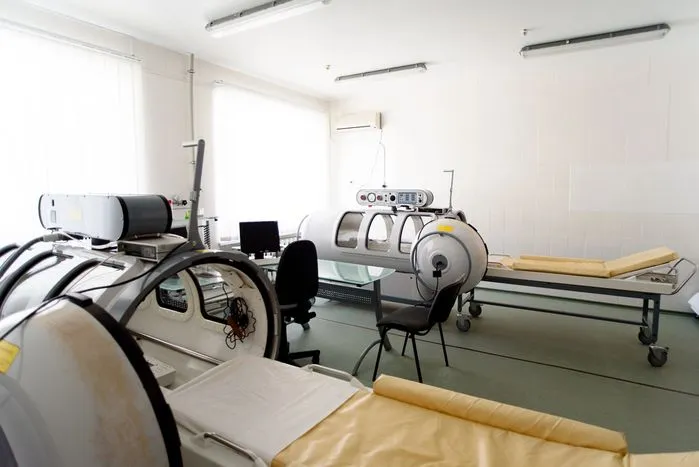Through years of patient experiences and medical case studies, we’ve seen that ITP isn’t caused by a single factor—it’s often a complex interplay of different aspects.
This article breaks down why ITP develops, what the latest science reveals about immune responses, and how understanding these root causes can influence treatment approaches.
Top 5 Takeaways: Discovering Its Causes
1. ITP is an immune system disorder.
▹ The body mistakenly attacks platelets.
▹ Antibodies misidentify platelets as threats.
▹ The spleen removes these "tagged" platelets, causing low counts.
2. Various triggers can lead to ITP.
▹ Viral infections: HIV, Hepatitis C, Epstein-Barr.
▹Medications: Some antibiotics and heart drugs.
▹ Autoimmune diseases: Lupus, rheumatoid arthritis.
3. Genetics may increase the risk.
▹ Some people inherit a higher likelihood of developing ITP.
▹ A family history suggests a genetic link.
▹ Genes alone don’t cause ITP—other factors play a role.
4. Lifestyle and environment matter.
▹ Chronic stress weakens the immune balance.
▹ Poor diet may impact platelet production.
▹ Toxin exposure (smoking, alcohol) can worsen immune function.
5. Personalized treatment works best.
▹ Standard treatments (steroids, immunosuppressants) don’t help everyone.
▹ Alternative approaches (immune modulation, nutrition, stress reduction) may improve outcomes.
By understanding these factors, patients can make informed choices to better manage ITP.
Understanding The Illness
Understanding Immune Thrombocytopenic Purpura (ITP) can be quite complex due to its nature. This medical condition occurs when platelets, vital for blood clotting, become targets of the immune system by mistake. Consequently, affected individuals often experience bleeding, bruising, and purplish spots, referred to as
Notably, it can be a chronic condition, yet many affected people lead normal lives with proper treatment. Knowledge of diagnosis methods and potential treatments is crucial for the effective management of this disorder.
Role of the Immune System in The Condition
Your body usually relies on the immune system for protection against invaders. However, in this condition, this system mistakenly views platelets as threats. This misinterpretation initiates an immune response, resulting in platelet destruction and, subsequently, a drop in platelet count.
The immune system's part in ITP is complex and multifaceted. Proteins known as antibodies, typically responsible for shielding the body from harmful substances, play a significant role. In the case of this disease, these antibodies misdirect their attack toward platelets, tagging them for elimination by the spleen, our body's sanitation service.
Common Triggers
Several triggers have been identified that may instigate the onset of the condition. These triggers do not necessarily lead to it but are common factors that potentially provoke the condition.
Identified triggers fall into various categories:
- Infections from Viruses: HIV, Hepatitis C, and Epstein-Barr are viral infections linked to ITP development. Such infections stimulate the immune system, leading to mistaken attacks on platelets.
- Reactions to Medication: Certain drugs, including specific antibiotics and heart medications, can instigate adverse reactions, causing ITP. Discontinuing these medicines often resolves the issue.
- Complications during Pregnancy: ITP sometimes manifests during pregnancy. While typically mild and often resolved post-delivery, occasional severe complications can occur for both mother and newborn.
- Disorders of Autoimmune Nature: People living with autoimmune diseases, such as lupus or rheumatoid arthritis, are at higher risk for ITP. In these instances, the immune system wrongfully targets and destroys platelets.
Genetic Factors Influencing It
Certain genetic mutations have been noted to heighten susceptibility towards this condition. Often, these mutations impact genes instrumental in platelet production and function, resulting in a decline in platelet count, a distinctive sign of the disease.
Specific genetic factors also play a role in determining the severity and progression of it in individuals. For example, certain mutations could trigger a more aggressive form of the disease, while others may result in a less severe manifestation or influence treatment response.
Environmental and Habit Contributors
Elevated stress levels and unhealthy diets lead the pack in environmental and lifestyle influences. These disruptors interfere with our immune system while triggering physiological changes that can provoke the illness.
Nutrition significantly influences health. Consuming a diet deficient in essential nutrients can weaken immunity, increasing the likelihood of conditions like it. Persistent high stress also affects our immune response, making us more prone to illness.
“Over ten years of working with hundreds of ITP patients, their condition has no standardized origins or solutions. The immune system develops its faulty response in ITP because viral exposure interacts with natural predispositions along with external pressures while affecting nutritional balance. Patient success and our professional healthcare experience demonstrate that individualized medical treatment based on immune system assessment combined with lifestyle evaluations produces sustained positive results. The importance of correctly treating ITP equals the importance of comprehending what causes platelet reduction in patients.”
Supporting Facts and Statistics
Years of firsthand experience and patient care show that the stats behind ITP tell an important story. Here's a quick, scannable breakdown of key findings—paired with real-world insights:
1. ITP Is Rare, But Not Uncommon
• 4 cases per 100,000 children annually
• 3 cases per 100,000 adults annually
Source: Cleveland Clinic
Insight: Many diagnoses follow unexplained bruising or nosebleeds—especially in children.
2. Certain Medications Can Cause ITP
• Common culprits: antibiotics, antivirals, anti-inflammatories
• Symptoms may resolve after stopping the drug.
Source: NHLBI
Insight: Tracking medication history is crucial—many drug-induced cases are reversible.
3. Children Are Frequently Affected
• Over 3,000 pediatric ITP cases each year in the U.S.
• Often follows a common cold or viral illness.
Source: Boston Children’s Hospital
Insight: Early signs are easy to miss unless platelet counts are checked.
Behind every statistic is a patient story. These numbers support what we've seen firsthand: ITP is a complex, multi-cause condition that requires personalized attention and proactive care.
Final Thoughts & Opinion: Rethinking ITP Causes & Treatment
While immune dysfunction is often cited as the main cause, real-world cases suggest a complex interplay of genetics, environment, and lifestyle factors.
Key Insights from Research & Experience
1. Common Triggers Vary Widely
• Chronic stress, viral infections, and medication use are frequently linked to its onset.
• Genetic predisposition may heighten risk, but it doesn’t guarantee disease development.
• Environmental toxins and diet also play roles in immune dysregulation.
2. Personalized Treatment May Be More Effective
• Conventional treatments (steroids, immunosuppressants) don’t work for everyone.
• Some patients see improvements in immune modulation, dietary changes, and stress reduction.
• Addressing the immune system’s root dysregulation—not just suppressing symptoms—could improve long-term outcomes.
3. A Shift in Perspective Is Needed
• Instead of only treating ITP as an autoimmune issue, we should explore broader health influences.
• Patients who actively manage their health with a combination of medical and holistic approaches often see better results.
The Bottom Line
A more individualized approach to treatment and research is crucial. By empowering patients with actionable knowledge and diverse treatment strategies, we can improve both outcomes and quality of life.
Frequently Asked Questions
What is the most common cause of purpura?
The most common cause of purpura is a blood clotting disorder. This is often due to the body's immune system attacking the blood platelets, which are essential for clotting. Other causes can include certain medications, infections, or diseases like leukemia and lupus.
When should I worry about purpura?
You should worry about purpura if you notice unexplained, large, or painful bruises, especially if they're accompanied by other symptoms such as fever, joint pain, or weakness. These could be signs of a more serious underlying condition, like a blood clotting disorder or an autoimmune disease.
What is the fastest way to get rid of purpura?
The fastest way to get rid of purpura is to treat the underlying cause. This might involve medication to address a blood clotting disorder, an autoimmune disease, or an infection. In some cases, where purpura is caused by medication, your doctor might recommend changing or stopping the medication.
What deficiency is purpura caused by?
Purpura can be caused by a deficiency in platelets, which are essential for blood clotting. This condition, known as thrombocytopenia, can result from a variety of factors, including certain medications, infections, autoimmune diseases, and cancers.
What can be mistaken for purpura?
Conditions that can be mistaken for purpura include petechiae, which are tiny red or purple spots caused by bleeding into the skin, and ecchymosis, which is a larger area of bruising.
What autoimmune diseases cause purpura?
Autoimmune diseases that can cause purpura include lupus, rheumatoid arthritis, and vasculitis. These conditions can cause the body's immune system to attack the blood platelets, leading to clotting problems and purpura.
What cancers cause purpura?
Certain cancers, such as leukemia and multiple myeloma, can cause purpura. These cancers can interfere with the production of platelets, leading to clotting problems and purpura.
Is purpura caused by stress?
Purpura is not typically caused by stress. It's more commonly caused by conditions that affect blood clotting, such as platelet deficiencies, autoimmune diseases, or certain cancers.
What drugs can cause purpura?
Several drugs can cause purpura, including certain antibiotics, anticoagulants, and antiplatelet drugs. These medications can interfere with the body's ability to clot blood, leading to purpura.
What do leukemia blood spots look like?
Leukemia blood spots, or petechiae, often appear as small, flat, red, or purple spots on the skin. They can occur anywhere on the body but are most commonly found on the legs, feet, and arms.
What blood disorder causes purpura?
The blood disorder thrombocytopenia, which is a deficiency in platelets, is a common cause of purpura. Platelets are essential for blood clotting, and a lack of them can lead to easy bruising and bleeding, including purpura.
What does a kidney rash look like?
A kidney rash often appears as small, red bumps or patches on the skin that may be itchy or painful. It's typically associated with kidney disease or infection and may be accompanied by other symptoms such as fever, fatigue, or changes in urine.



.webp)

.avif)